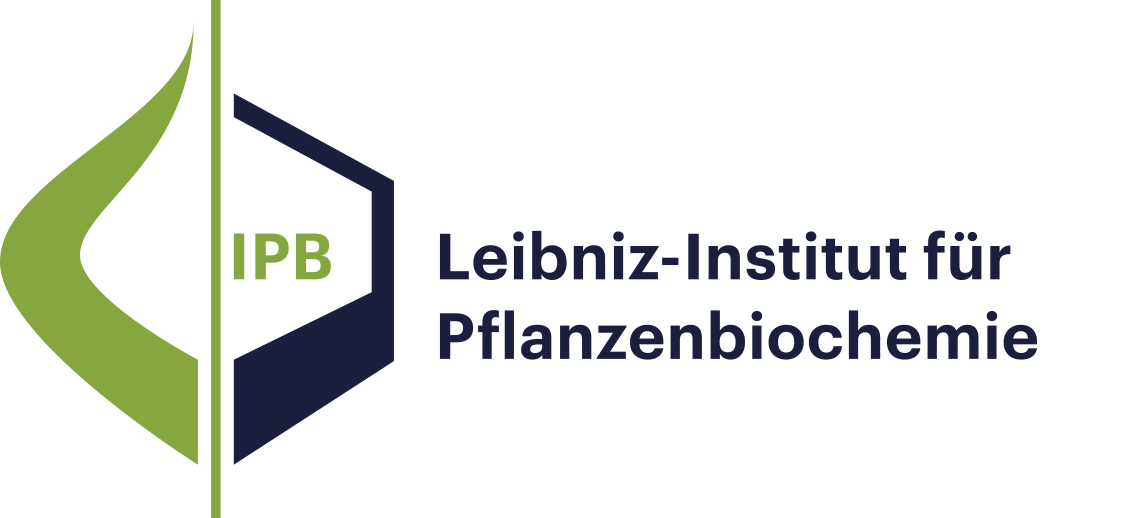- Ergebnisse als:
- Druckansicht
- Endnote (RIS)
- BibTeX
- Tabelle: CSV | HTML
Publikation
Publikation
Publikation
Publikation
Leitbild und Forschungsprofil
Molekulare Signalverarbeitung
Natur- und Wirkstoffchemie
Biochemie pflanzlicher Interaktionen
Stoffwechsel- und Zellbiologie
Unabhängige Nachwuchsgruppen
Program Center MetaCom
Publikationen
Gute Wissenschaftliche Praxis
Forschungsförderung
Netzwerke und Verbundprojekte
Symposien und Kolloquien
Alumni-Forschungsgruppen
Publikationen
Publikation
In order to analyse the amino acid determinants which alter the positional specificity of plant lipoxygenases (LOXs), multiple LOX sequence alignments and structural modelling of the enzyme-substrate interactions were carried out. These alignments suggested three amino acid residues as the primary determinants of positional specificity. Here we show the generation of two plant LOXs with new positional specificities, a Δ-linoleneate 6-LOX and an arachidonate 11-LOX, by altering only one of these determinants within the active site of two plant LOXs. In the past, site-directed-mutagenesis studies have mainly been carried out with mammalian lipoxygenases (LOXs) [1]. In these experiments two regions have been identified in the primary structure containing sequence determinants for positional specificity. Amino acids aligning with the Sloane determinants [2] are highly conserved among plant LOXs. In contrast, there is amino acid hetero-geneity among plant LOXs at the position that aligns with P353 of the rabbit reticulocyte 15-LOX (Borngräber determinants) [3].
Publikation
A particular isoform of lipoxygenase (LOX, EC 1.13.11.12) localized on lipid bodies has been shown by earlier investigations to play a role during seed germination in initiating the mobilization of triacylglycerols. On lipid bodies of germinating cucumber (Cucumis sativus L.) seedlings, the modification of linoleoyl moieties by this LOX precedes the hydrolysis of the ester bonds. We analyzed the expression and intracellular location of this particular LOX form in leaves and seeds of tobacco (Nicotiana tabacum L.) transformed with one construct coding for cucumber lipid-body LOX and one construct coding for cucumber LOX fused with a hemagglutinin epitope. In both tissues, the amount of lipid-body LOX was clearly detectable. Biochemical analysis revealed that in mature seeds the foreign LOX was targeted to lipid bodies, and the preferred location of the LOX on lipid bodies was verified by immunofluorescence microscopy. Cells of the endosperm and of the embryo exhibited fluorescence based on the immunodecoration of LOX protein whereas very weak fluorescent label was visible in seeds of untransformed control plants. Further cytochemical analysis of transformed plants showed that the LOX protein accumulated in the cytoplasm when green leaves lacking lipid bodies were analyzed. Increased LOX activity was shown in young leaves of transformed plants by an increase in the amounts of endogenous (2E)-hexenal and jasmonic acid.
Publikation
In barley leaves 13-lipoxygenases are induced by jasmonates. This leads to induction of lipid peroxidation. Here we show by in vitro studies that these processes may further lead to autoxidative formation of (2E)-4-hydroxy-2-hexenal from (3Z)-hexenal.
Publikation
Allene oxide synthase (AOS) is the first enzyme in the lipoxygenase (LOX) pathway which leads to formation of jasmonic acid (JA). Two full‐length cDNAs of AOS designated as AOS1 and AOS2, respectively, were isolated from barley (H. vulgare cv. Salome) leaves, which represent the first AOS clones from a monocotyledonous species. For AOS1, the open reading frame encompasses 1461 bp encoding a polypeptide of 487 amino acids with calculated molecular mass of 53.4 kDa and an isoelectric point of 9.3, whereas the corresponding data of AOS2 are 1443 bp, 480 amino acids, 52.7 kDa and 7.9. Southern blot analysis revealed at least two genes. Despite the lack of a putative chloroplast signal peptide in both sequences, the protein co‐purified with chloroplasts and was localized within chloroplasts by immunocytochemical analysis. The barley AOSs, expressed in bacteria as active enzymes, catalyze the dehydration of LOX‐derived 9‐ as well as 13‐hydroperoxides of polyenoic fatty acids to the unstable allene oxides. In leaves, AOS mRNA accumulated upon treatment with jasmonates, octadecanoids and metabolizable carbohydrates, but not upon floating on abscisic acid, NaCl, Na‐salicylate or infection with powdery mildew. In developing seedlings, AOS mRNA strongly accumulated in the scutellar nodule, but less in the leaf base. Both tissues exhibited elevated JA levels. In situ hybridizations revealed the preferential occurrence of AOS mRNA in parenchymatic cells surrounding the vascular bundles of the scutellar nodule and in the young convoluted leaves as well as within the first internode. The properties of both barley AOSs, their up‐regulation of their mRNAs and their tissue specific expression suggest a role during seedling development and jasmonate biosynthesis.

